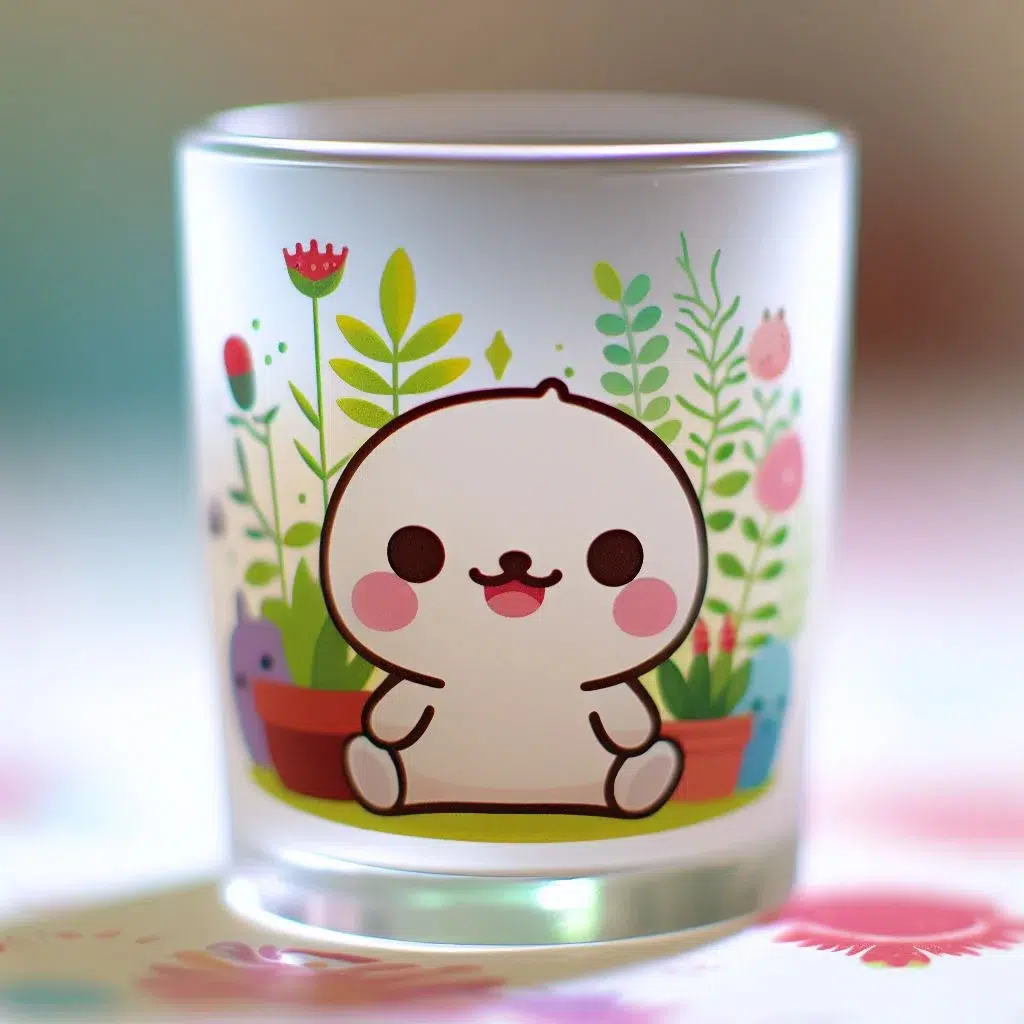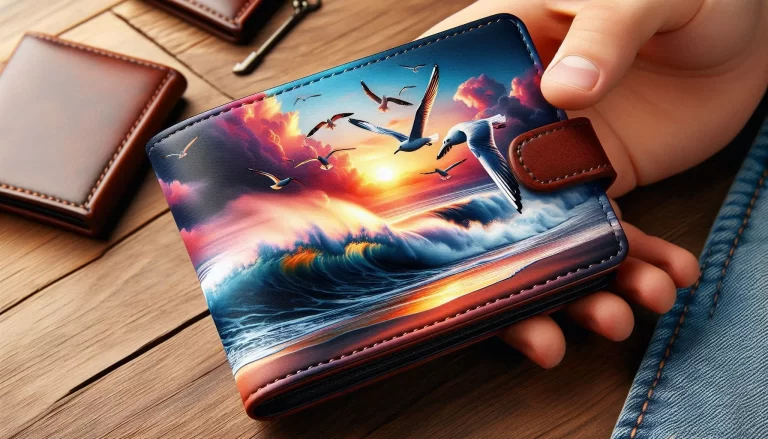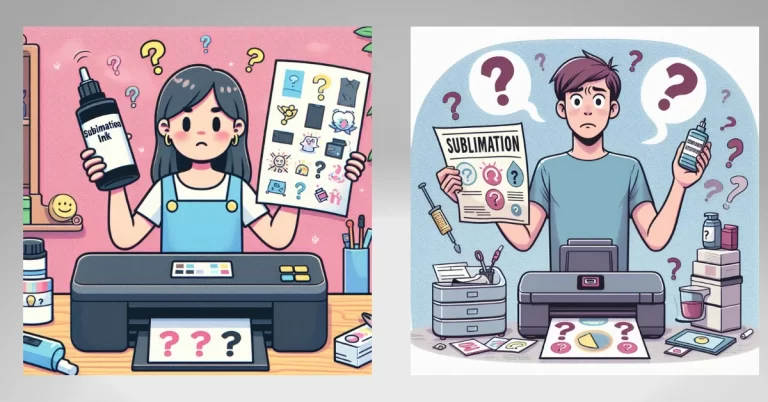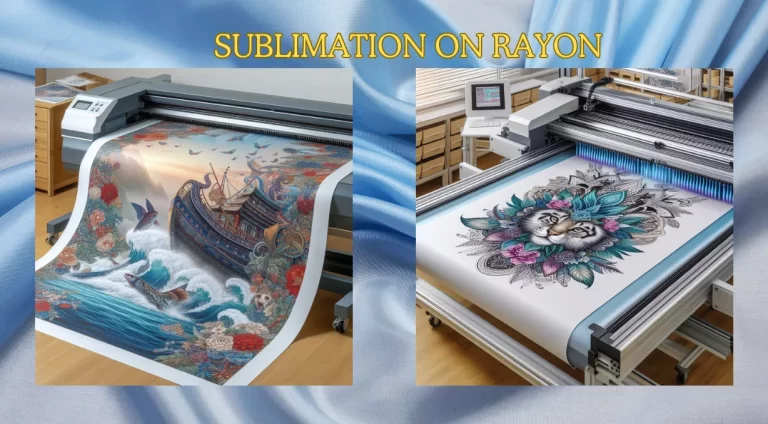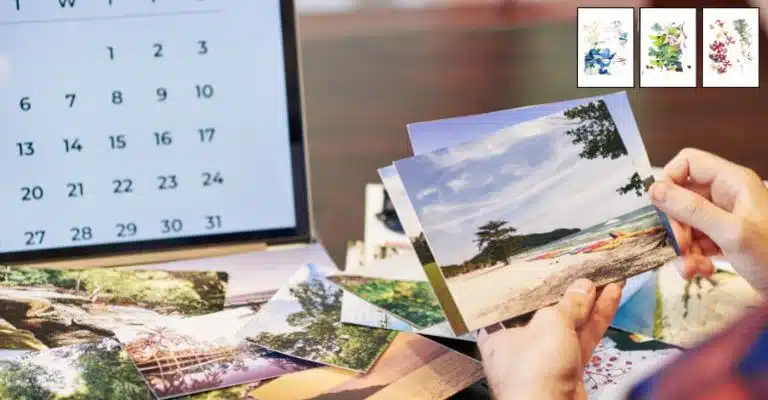7 Amazing Tips for Sublimation on Glass
Struggling to get vibrant, lasting sublimation designs on glass? We get it—cracked mugs, faded beer glasses, and messy coatings are frustrating. Learn the exact temps, times, and tricks (like frosted vs. clear glass prep) to nail sublimation on jars, cups, and Libbey glass. No guesswork, just pro results.
Sublimation on glass is a creative and fun way to personalize your home decor, gifts, and crafts. Sublimation is a process that uses heat and special ink to transfer a design onto a surface, such as glass, ceramic, metal, or fabric. It can produce stunning results, but it also requires some preparation and care.
Sublimation on glass is a captivating way to transform plain glass surfaces into personalized masterpieces. With various methods at your disposal, the only limit is your imagination. Explore the magic of sublimation and watch your creative visions come to life!
What is Sublimation on Glass? (And Why It’s Tricky)
Sublimating glass is an easy task, but it’s more similar to baking soufflés than microwaving leftovers. If you master the prep and heat, you’ll be able to transform ‘Why won’t this work?! ‘ Into ‘Look what I made! ‘ (Stick with us—we’ll be exploring coatings next).
Why Glass Throws Curveballs
- The “Slippery Slope” Effect: Glass lacks pores to trap sublimation ink, so designs fade or peel without a specialized coating (more on that later).
- Heat Sensitivity: Glass cracks if heated unevenly. Most projects require 320–400°F, but a 10°F overshoot can turn your mug into confetti.
- Material Quirks: Frosted glass holds ink better than clear glass (think 30% more durable), but both demand precision.
Let’s break it down:
| Glass Type | Pros | Cons |
|---|---|---|
| Frosted | Textured surface grips ink better | Limited transparency, niche aesthetic |
| Clear | Sleek, modern look | Prone to fading; needs extra coating steps |
Ever tried baking cookies at the wrong temperature? Sublimating glass is similar—timing and heat are everything. Most crafters report a 50% failure rate on their first try, usually due to rushed prep or skipping coatings.
The Real Trouble Spots
- Adhesion Anxiety: Uncoated glass repels ink like water off a duck’s back.
- Time Crunch: Press too long (over 300 seconds), and ink dulls; too short (under 240), and it won’t set.
- Design Ghosting: Uneven pressure creates blurry edges, especially on curved surfaces like beer cans.
Here’s the silver lining: With the right tools—think sprays like Poly-Flex or pre-coated blanks—you can turn glass from foe to friend. But cut corners, and you’ll end up with a Pinterest fail.
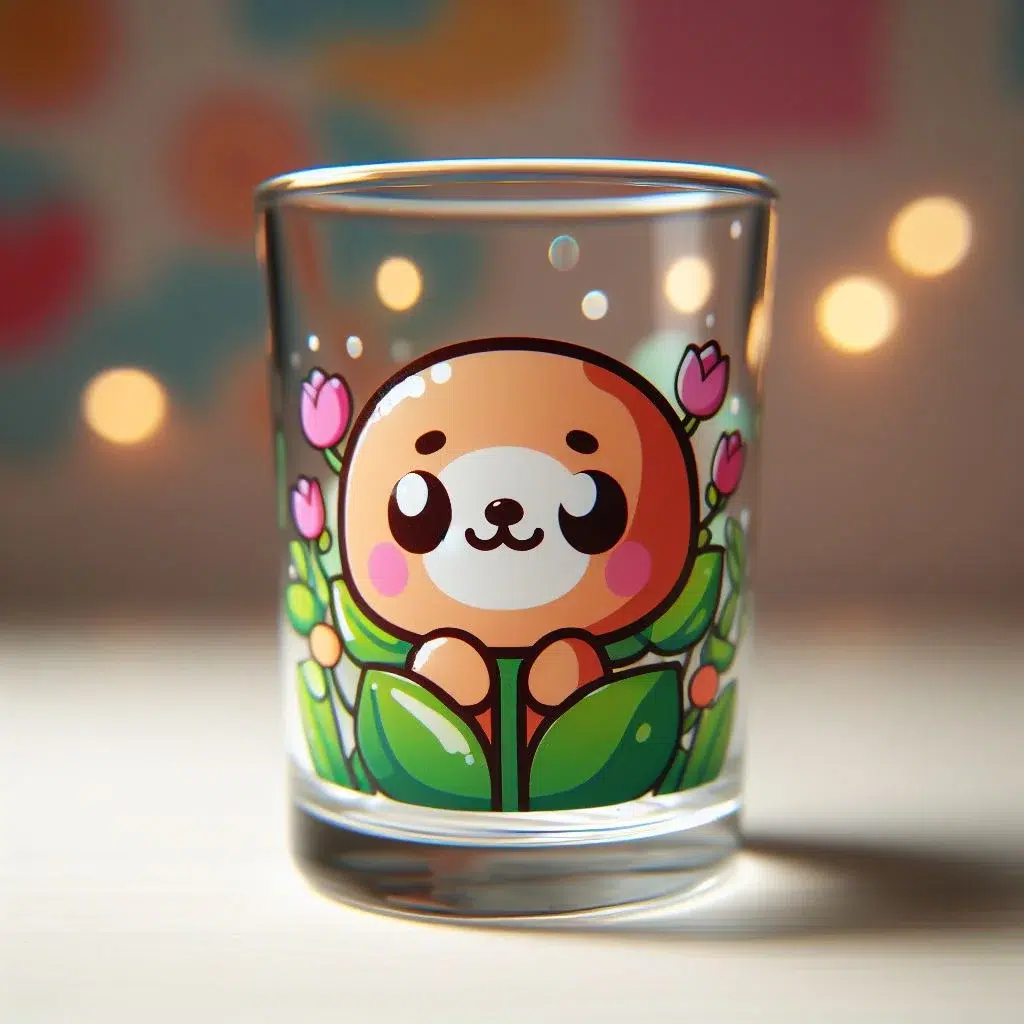
Materials & Tools for Success
You wouldn’t climb a mountain without ropes, so don’t sublimate glass without coatings and the right blanks. Skip the shortcuts, and you’ll turn “meh” into magic.
Your Non-Negotiable Toolkit
Here’s what you actually need to avoid those “Why is this peeling?!” meltdowns:
A. Sublimation Coatings: The Make-or-Break Layer
Glass is slicker than a freshly waxed car, so you’ll need a bonding agent. Your two best bets:
| Coating Type | Pros | Cons |
|---|---|---|
| Spray-On | Budget-friendly, works on any glass shape | Messy application; requires drying time |
| Pre-Coated Blanks | Foolproof consistency (ideal for Libbey glass) | Limited sizes/styles; pricier per piece |
Fun fact: Crafters using pre-coated blanks report 90% fewer “ink lift” fails compared to DIY sprays. But if you’re experimenting with oddball jars or thrift-store finds, sprays like Sublime Coat are your MVP.
B. Glass Types: Choose Wisely
Not all glass is created equal. Here’s the lowdown:
| Glass Type | Best For | Watch Out For |
|---|---|---|
| Frosted | High-detail designs (photos, text) | Limited transparency; not dishwasher-safe long-term |
| Clear | Elegant, modern looks (wine glasses, vases) | Requires double coating for durability |
Pro tip: Libbey glass blanks (like their 16oz mugs) are crowd favorites because they’re pre-frosted and tested for 400°F resilience—no guesswork.
C. The “Underdogs” You’ll Gladly Have
- Heat-Resistant Tape: Skip the dollar-store stuff. 3M High-Temp Tape keeps designs from shifting mid-press (a 5 fixfora50 mistake).
- Infrared Thermometer: Glass heats unevenly? Nail the sweet spot with a $20 tool that’s 10x more reliable than your press’s built-in sensor.
- Microfiber Cloths: Dust or fingerprints = ghosting. Wipe with 90% isopropyl alcohol for a squeaky-clean start.
One Thing Most Crafters Forget
Even the priciest coating won’t save thin, dollar-store glass. Opt for blanks at least 3mm thick—they’re less likely to crack under heat and hold ink 40% longer.
Step-by-Step Guide: Sublimating Glass Like a Pro
Sublimating glass is 10% art, 90% science. Nail the temps, respect the cooling time, and never skip the prep. Your first try might feel like wrestling a greased pig, but stick with it—you’ll be cranking out Insta-worthy glassware in no time.
Prep Work: Cleaner Than a Surgeon’s Scalpel
- Degrease Like It’s Surgery
Wipe your glass with 90% isopropyl alcohol and a lint-free cloth. Fingerprints? They’re the enemy—even a smudge can ghost your design. - Coat with Confidence
- Spray-On: Hold the can 8–10 inches away. Two light coats (drying 10 minutes between) beat one gloppy mess.
- Pre-Coated Blanks: Skip the spray—these are ready to rock. (But still wipe ’em down!)
Design Setup: No Room for “Oops”
- Mirror Your Image
Flip your design horizontally—especially for mugs or curved surfaces. Trust me, backward text isn’t a vibe. - Cut & Tape with Precision
Use heat-resistant tape to secure the transfer paper. Pro tip: Leave a 1/8” gap around edges to avoid ink bleed.
Heat Press: Time to Get Nerdy
- Dial In Your SettingsGlass TypeTemperatureTimePressureFrosted (Pre-Coated)380°F240–300 secMedium-FirmClear (Spray-On)365°F180–240 secLight-Medium⚠️ Hot Take: Thin glass (like beer cans) cooks faster—reduce time by 20% to avoid cracking.
- Pre-Heat the Glass
Pop your blank in the press for 10–15 seconds before adding the transfer. This prevents “thermal shock” (a.k.a. sudden cracks). - Press Like You Mean It
- Use Teflon sheets on top/bottom to protect the design.
- Start the timer only when the press fully closes.
Post-Press: Patience is a Virtue
- Cool It (Slowly!)
Let the glass cool to room temp in the press. Rushing this step = cracked glass or ink that lifts like a bad sticker. - Peel with Care
Gently lift a corner. If the design sticks, let it cool another minute. No yanking!
Pro-Level Polish
- Seal the Deal (Optional)
For dishwasher-safe durability, spray with a sublimation sealant (like Clear Coat). Cure for 24 hours before using.
Troubleshooting Quick Hits
- Faded Colors? You likely undershot the temp or time. Bump it up 10°F next round.
- Cracks? Glass was too thin or heated unevenly. Stick to blanks ≥3mm thick.
- Blurry Edges? Uneven pressure. Use foam padding for curved surfaces.
We will give you 7 amazing tips for glass sublimation that will enable you to achieve the best outcome possible.
Tip 1: Choose the right glass substrate
Not all glass substrates are suitable for sublimation. You need to choose a glass substrate that has a polyester coating or a sublimation spray applied to it. This coating allows the ink to bond with the glass and prevents it from fading or peeling off.
You can buy pre-coated sublimation blanks, such as glass cutting boards, coasters, photo frames, or mugs, or you can coat your own glass substrate with a sublimation spray.
If you coat your own glass substrate, follow the instructions and let it dry completely before sublimating.
Tip 2: Print your design in reverse
When you print your design on sublimation paper, you must print it in reverse or mirror image. This is because you will place the paper face on the glass substrate and transfer the design with heat. If you don’t print your design reverse, it will appear backward on the glass.
You can use any sublimation printer to print your design, but make sure to use high-quality ink and paper for the best results.
Tip 3: Use a sticky adhesive vinyl sheet
A sticky adhesive vinyl sheet is a great tool for sublimation on glass. It acts as a sticker that holds your design in place on the glass substrate and prevents it from moving or shifting during the heat transfer.
To use a sticky adhesive vinyl sheet, you need to cut it according to the size and shape of your glass substrate, remove it from the backing paper, spray some application fluid on the sticky side, and place it on the glass. Then, use a squeegee to smooth out any bubbles or wrinkles and eliminate excess fluid.
Finally, place your printed sublimation paper on top of the vinyl sheet and tape it securely with heat-resistant tape.
Tip 4: Use a flat heat press machine or a convection oven
To transfer your design onto the glass substrate, you must use a heat source to provide even and consistent pressure and temperature. A flat heat press machine or a convection oven is ideal.
A flat heat press machine can press your design onto the glass substrate with high pressure and heat. A convection oven can bake your design onto the glass substrate with hot air circulation.
Whichever method you choose, follow the recommended temperature and time settings for glass sublimation (usually around 400°F for 12-15 minutes) and use Teflon sheets to protect the glass from cracking or breaking.
Tip 5: Let the glass cool down completely
After you transfer your design onto the glass substrate, you need to let it cool down completely before removing the paper and the vinyl sheet. This is because the glass is very hot and fragile when it comes out of the heat source and can burn your skin or shatter if you touch it too soon.
You can use heat-resistant gloves to handle the glass carefully and place it on a cooling rack or a heat-proof surface. Wait until the glass reaches room temperature before peeling off the paper and the vinyl sheet gently.
Tip 6: Clean and seal your finished product
Once you remove the paper and the vinyl sheet from your glass substrate, you will see your beautiful sublimated design. To ensure your design lasts long and looks great, clean and seal your finished product.
You can use a soft cloth and some rubbing alcohol to wipe off any residue or smudges from the surface of the glass. Then, you can apply a clear acrylic spray or a UV-resistant spray to seal your design and protect it from fading or scratching.
Let the spray dry completely before using or displaying your sublimated glass product.
Tip 7: Enjoy your sublimated glass product
Congratulations! You have successfully created a sublimated glass product that is unique and personalized. You can now enjoy your sublimated glass product as a home decor item, a gift, or a craft project.
You can also experiment with different designs, colors, shapes, and sizes of glass substrates and create more amazing sublimated glass products.
Seven Captivating Methods for Sublimation on Glass
Now, let’s dive into the exciting world of sublimation and explore seven creative methods to achieve stunning results:
1. Sublimation Printing:
Sublimation printing is the most common method. It involves printing your desired image or design onto sublimation paper using a sublimation inkjet printer. After that, heat and pressure are applied, causing the ink to sublimate and adhere to the glass.
2. Sublimation Coating:
Some glass products come pre-coated with a sublimation-receptive layer. This simplifies the process by printing your design directly onto the coated glass, eliminating the need for sublimation paper.
3. Heat Press Transfers:
With this method, you print your image on sublimation paper and then use a heat press to transmit the design onto the glass. It’s a versatile technique suitable for various glass items, from mugs to picture frames.
4. Sublimation Decals:
Sublimation decals are pre-printed designs that can be applied to glass surfaces. These decals come in various designs and are perfect for adding a personal touch to glassware or decor.
5. Glass Etching:
Combine sublimation with traditional glass etching techniques to create intricate designs. The sublimation ink can be selectively etched, leaving the glass with a frosted, textured appearance.
6. Sublimation Resin:
Sublimation resin is a clear, epoxy-like coating that can be applied over sublimated images to protect and enhance them. It adds depth and durability to your sublimated designs.
7. UV Printing:
UV printing technology allows direct printing on glass surfaces, eliminating the need for sublimation paper. The UV-cured ink bonds with the glass, producing vibrant, long-lasting images.
Fixing Common Problems
Ink Fading: “Why Your Sublimation Designs Look Washed Out on Glass”
- Cause: Low heat/time, poor coating, or cheap transfer paper.
- Fix:
- Bump temps by 10–15°F and extend pressing time by 30 seconds.
- Use pre-coated blanks or reapply spray coating (thin layers only!).
- Swap to high-release transfer paper—less ink gets left behind.
Cracking/Scorching: “Adjusting Heat Press Settings for Delicate Glass”
- Cause: Overheating, thin glass, or uneven pressure.
- Fix:
- Lower temp to 350°F and use shorter presses (180–220 sec).
- Place a silicone pad inside curved items (mugs/cans) to distribute heat.
- Stick to ≥3mm thick blanks—they’re less likely to explode mid-press.
Peeling Designs: “How to Seal Sublimation on Glass for Durability”
- Cause: Skipped coating, rushed cooling, or rough handling.
- Fix:
- Spray designs with acrylic sealant (like Krylon) post-press.
- Let glass cool fully in the press—no shortcuts!
- Hand-wash only; dishwashers are design serial killers.
Advanced Tips for Niche Projects
Sublimation Beer Can Glasses: Full Wrap vs. Partial Designs
- Full Wraps: Use flexible sublimation wraps and high-temp tape for seamless edges.
- Partial Designs: Mask off areas with heat-resistant vinyl to prevent ghosting.
- Pro Tip: Press at 370°F for 200 sec—higher temps warp thin glass.
Creating Vibrant Sublimation Jars & Containers
- Flat Surfaces: Use silicone pads to keep transfers flush.
- Curved Lids: Press at 10% lower pressure to avoid slippage.
- Durability Hack: Coat interiors for food-safe designs (check FDA-approved sprays!).
Using Sublimation on Clear Glass: Pros, Cons, Workarounds
- Pros: Sleek, modern look (perfect for wedding decor).
- Cons: Fades faster; needs double coatings for longevity.
- Workaround: Etch glass lightly with sandpaper for a frosted effect + better ink grip.
Become an expert on sublimation and printers with Subli Genius Print our guide, for more information or a step-by-step how-to guide.
FAQs
Remember, practice makes perfect, so don’t be afraid to experiment and push your creative boundaries. Your glass creations will be the envy of all who see them. If you are interested in learning how to sublimate glass can tumblers, check out this tutorial by SoFontsy.
